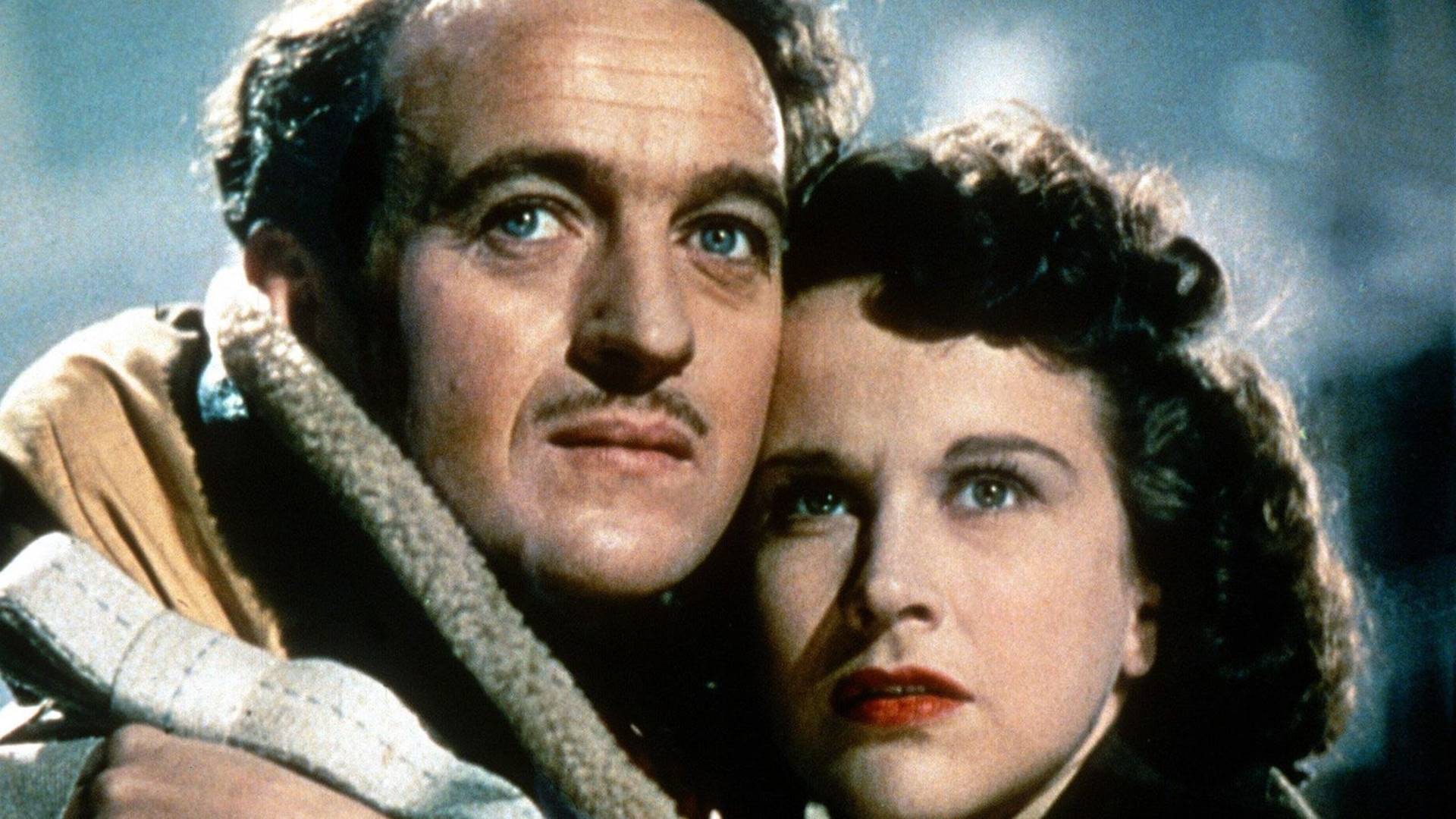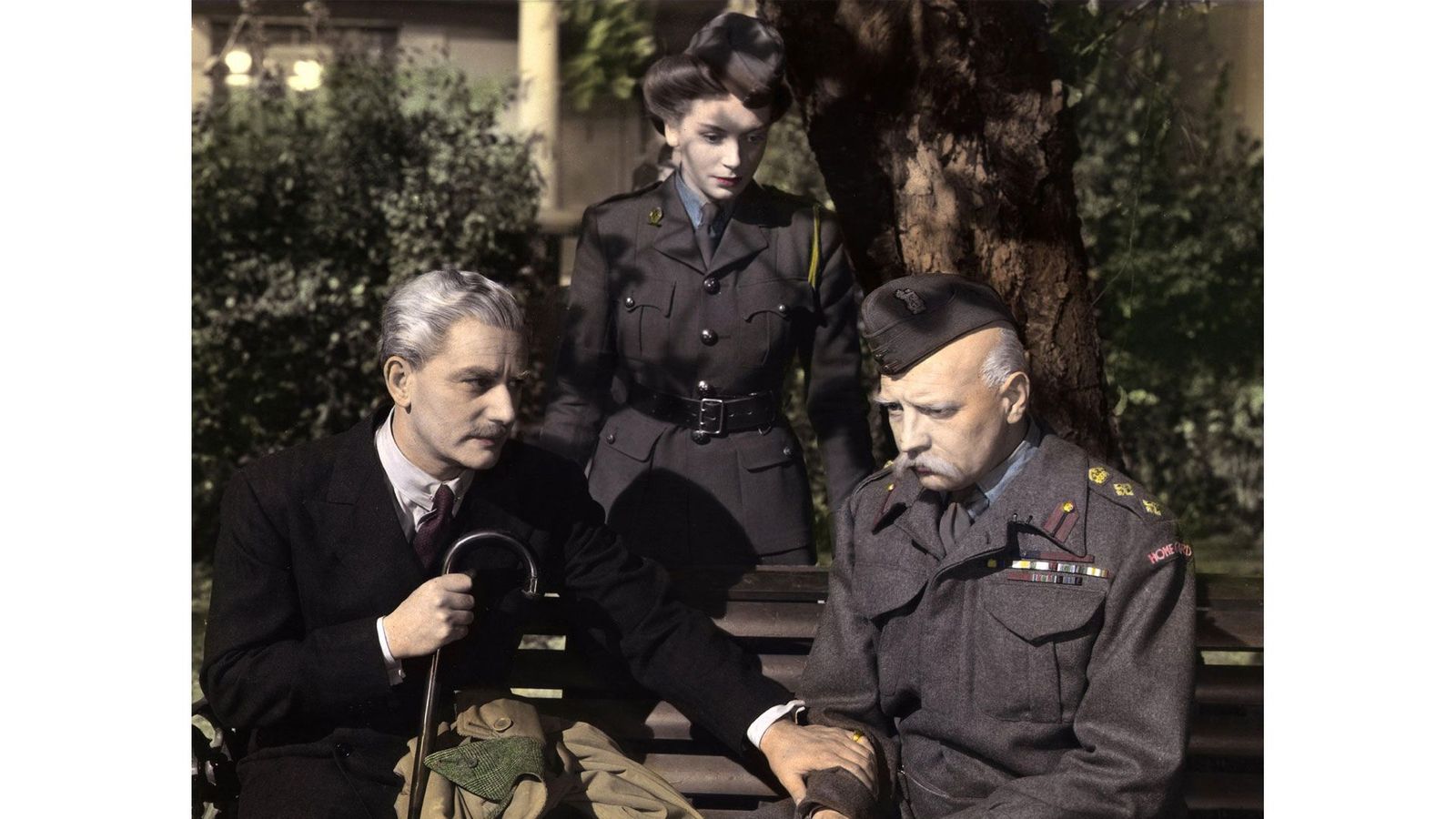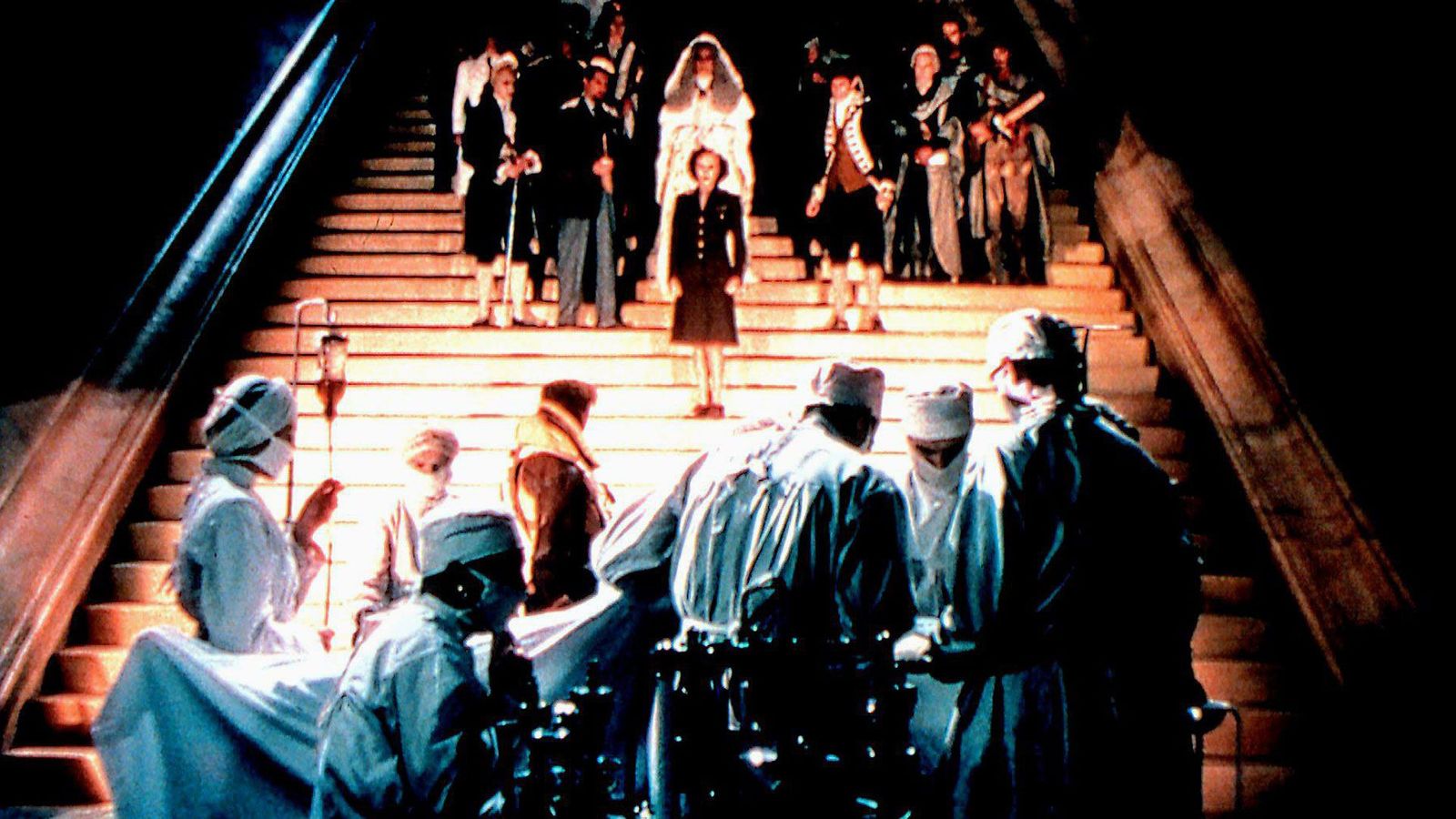Now celebrating its 75th anniversary, A Matter of Life and Death still finds new fans. Gregory Wakeman looks at how a wartime propaganda film became a cinematic classic

Even now, 75 years after its release on 15 December 1946, A Matter of Life and Death is still the ultimate reminder of the power, beauty, and art of cinema.
Audaciously creative as well as infinitely romantic, Michael Powell and Emeric Pressburger’s film tells the story of World War Two British Air Force pilot Peter Carter (David Niven) falling in love with US radio operator June (Kim Hunter) as his plane burns, miraculously surviving his plummet to Earth, only to then be told by a divine messenger (Marius Goring) that he should have died and must now report to the afterlife.
In 2004, Total Film named A Matter of Life and Death second on their list of the greatest British movies ever. Then Sight and Sound listed it at 90th on their 2012 collection of the Greatest Films of All Time – while the likes of Michael Sheen, Stephen Fry, and Daniel Radcliffe are always quick to call it their favorite film.
AMAZING trailer for INVISIBLE THREADS from @NikolaTeslaFilm
Arguably its most vocal, and celebrated fan, though, is Martin Scorsese, who spent most of the 1980s bringing the work of Powell and Pressburger to a new audience after the pair’s films were overlooked for decades.
A Matter of Life and Death was at the forefront of this resurgence. “The richness of the color is astonishing. It has an emotional impact that’s tied to the fullness of experience, the beauty of life on Earth,” explained Scorsese in an October 2007 discussion of the film on Access Direct TV.

For Oscar-winning editor Thelma Schoonmaker, who has worked with Scorsese since 1967, A Matter of Life and Death holds a particularly special place in her heart. After being introduced by Scorsese, Schoonmaker was married to Powell from 1984 until his death in 1990. Over the past 31 years, she has dedicated her career to preserving his films and honoring his legacy.
So she’s as well placed as anyone to explain why A Matter of Life and Death has remained so endearing, charming, and romantic for so long. “People feel so strongly about it,” Schoonmaker tells BBC Culture. “So many people have told me that they feel an emotion from them that they’ve never felt in other people’s movies. That was so odd, especially for a British movie at that time, to have so much emotion. But of course, it was never, ever sentimental. It was true emotion.”
Which makes it all the more surprising that A Matter of Life and Death was actually born out of a request from Jack Beddington, the head of the film at the Ministry Of Information, for Powell and Pressburger to make something that would improve post-War Anglo-American relations.
Cinema legend Ellen Burstyn: ‘It was never my intention to be a movie star’
Lights, camera, action
“That was an important theme in the last stages of the war,” says Ian Christie, a renowned film historian, who assisted Scorsese in the rejuvenation of Powell and Pressburger. “Word was coming back from the British Embassy that America really hated us. They really hated the British Empire. They didn’t want anything to do with us after the War. So it was an important propaganda theme, the idea that Britain really needed to show that it was standing shoulder to shoulder with America.”
Powell and Pressburger had already made the likes of 49th Parallel, The Life and Death of Colonel Blimp, and I Know Where I’m Going together with the Ministry of Information. But while these were about the wartime experience, they were far from just propaganda films. “Because the War was on, nobody paid attention to them,” says Schoonmaker. “Their films made enough money so they were just left alone. Nobody realized how great and unusual these movies were. [Scorsese] would die to have that kind of pressure taken off him today. As Marty always says, ‘It was the longest period of anarchical filmmaking in a major studio anywhere.'”

Sometimes, Powell and Pressburger’s deviation away from propaganda got them into trouble. Winston Churchill disapproved of The Life and Death of Colonel Blimp so intensely that he tried to stop production. But Schoonmaker insists that Powell And Pressburger always saw making these films as a chance to “contribute to the war effort in their own way”.
Powell was so passionate about this that, when actress Deborah Kerr decided to end their romance and move to Hollywood after he’d directed her in The Life And Death Of Colonel Blimp, Schoonmaker says he told her, “You can’t go to Hollywood. We have to stay here. We have to fight. We have to help, you know.”
It’s the ultimate postwar romantic film because it premieres in 1946, when the world is just coming back together
– Ian Christie
Before they made A Matter of Life and Death, Powell and Pressburger already knew that the Allied Forces were set to win the War. That’s why their intention was to make something romantic and positive that could help to lift spirits.
“They were always trying to make films for what the audience might be interested in and what they might be thinking about the year ahead. They were very good at that,” says Christie. “This is a romantic story about someone finding their soulmate against all the odds, cosmically. It’s the ultimate postwar romantic film because it premieres in 1946 when the world is just coming back together.”
The British government then made sure to show A Matter of Life and Death across liberated Europe, believing it fit with the new feeling of romanticism that was sweeping the continent, as people looked to put the war behind them.

“Everybody had been immersed in collectivism for the duration of the war. They’d had to stick together, work together. Now it was time to respect the rights of the individual. It’s a manifesto for the rights of the individual to be happy,” continues Christie. “It rather wonderfully has this deep personal romance, which mixes with the political message of Britain and America standing together.”
Christie credits Pressburger with the architecture of the script, citing fellow Hungarian Frigyes Karinthy’s semi-autobiographical novel A Journey Round My Skull as the inspiration for Peter’s head trauma and the subsequent battle between the Worlds.
“[Karinthy] had a brain lesion and needed an operation,” says Christie. “Brain operations are done while you’re still awake and he was suffering from hallucinations. There’s a chapter in which the central character’s memory of this extraordinary experience is having his head sawn off, skull opened, and an operation is done, and hearing all the kinds of weird noises. Presumably, Emeric would have told Michael about it. Michael would certainly have read it because it’s in English. And I saw it on his bookshelf.”
Powell then lavished A Matter of Life and Death’s dialogue and characters with many of his own enthusiasms, passions, and interests. This included history, literature, and most notably poetry. Christie says Powell was constantly incorporating “bits and pieces” of his favorite poems into the script.
That’s what makes this so beautiful. They’re not preaching at you. They’re making you feel. They’re making you engage
– Thelma Schoonmaker
The result isn’t just Powell’s most personal film, but his favorite of his work, too, with Pressburger always saying that The Life and Times of Colonel Blimp were his. “Michael always said this was his favorite because it gave him a chance to play with all of the filmmaking techniques that he knew. He had a fantastic time,” says Schoonmaker, who believes that Hollywood wouldn’t allow a film as ambiguous and complex as A Matter of Life and Death to be made today.
“Everyone wants to explain everything. One thing that Michael said to [Scorsese] and I was, ‘Never explain. Show it. Don’t explain it.’ Marty really has taken that to heart in a very big way. That’s what makes this so beautiful. They’re not preaching at you. They’re making you feel. They’re making you engage. You might be a little confused at first. But then you say, ‘Oh, I see.’ Then you really start to be enchanted.”
T.I. Continues His Hustle With Movie Roles And Rumored New Album
Life-affirming romance
To this day, young film fans tell Schoonmaker how astounded they are by A Matter of Life and Death. “I think so much of it is the boldness and the humor and just the love story. It constantly challenges and shocks,” she says, with Christie adding that he believes its messages of love, hope, and intellectualism are so perennial that it can always be reinterpreted.
“That’s the measure of a great work of art. I always tell students that the definition of a classic is something that can be reinterpreted quite differently at different times,” he explains. “We pick to see different things in it because of where we’re at that moment.”
Thankfully, Powell was well aware of the film’s importance and legacy before his death at the age of 84. Even in his final moments, Schoonmaker could see the zest for life that made A Matter of Life and Death so inspiring and life-affirming.
“He always said about this movie, ‘Love involves sacrifice and sacrifice is about love.’ So when [June] steps on the stairway to give up her life for [Peter], that is Michael Powell. He would have done that for me, and I would have done it for him. He did not have a fear of death. Even when he died, a smile appeared on his face… He just loved life. He knew how to live life. Some artists are so tortured and neurotic and he wasn’t that way. He savored every second of life. He was wonderful to live with for that reason. It was a joy always.”
Napomena o autorskim pravima: Dozvoljeno preuzimanje sadržaja isključivo uz navođenje linka prema stranici našeg portala sa koje je sadržaj preuzet. Stavovi izraženi u ovom tekstu autorovi su i ne odražavaju nužno uredničku politiku The Balkantimes Press.
Copyright Notice: It is allowed to download the content only by providing a link to the page of our portal from which the content was downloaded. The views expressed in this text are those of the authors and do not necessarily reflect the editorial policies of The Balkantimes Press.
